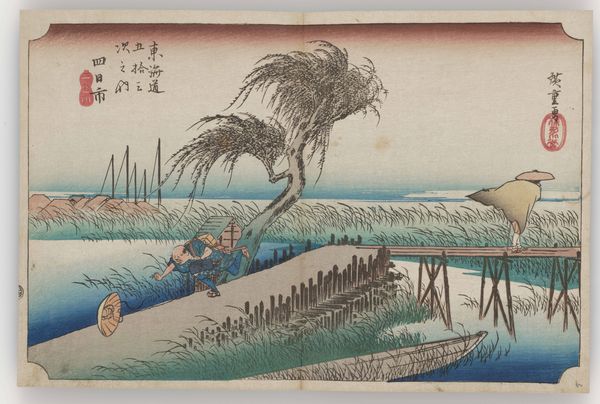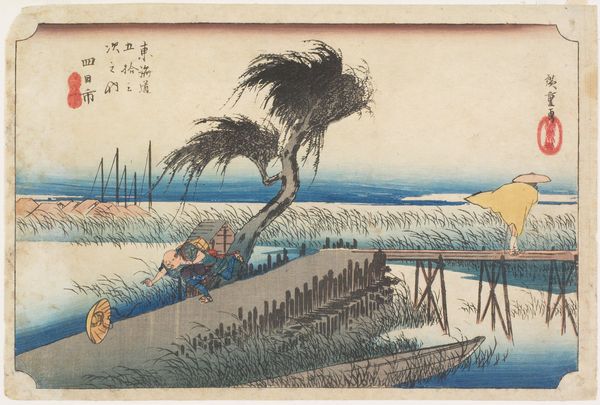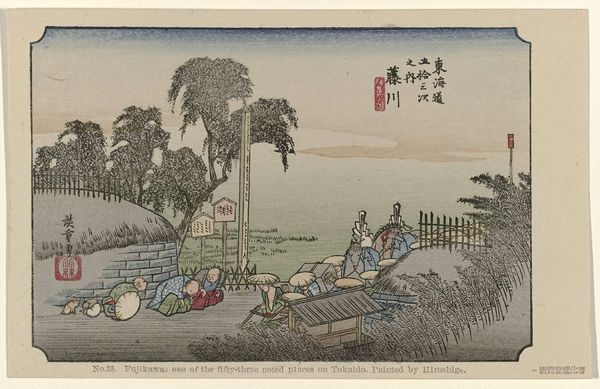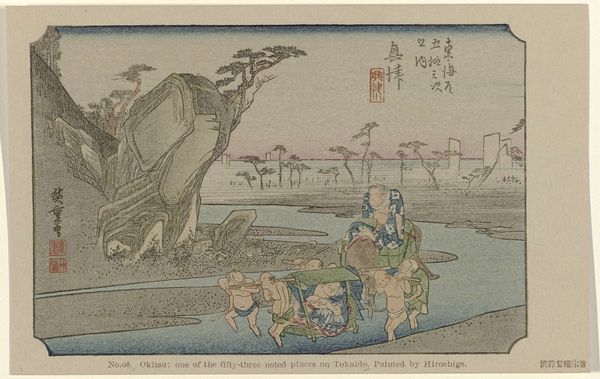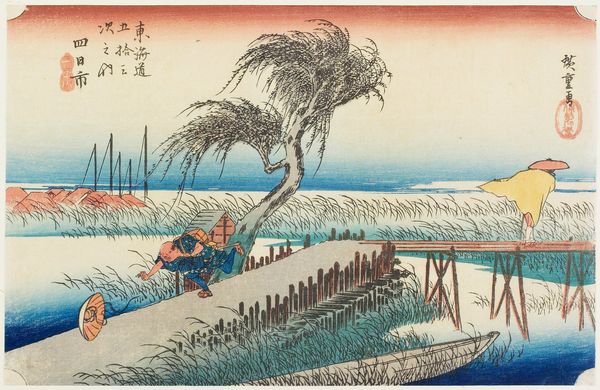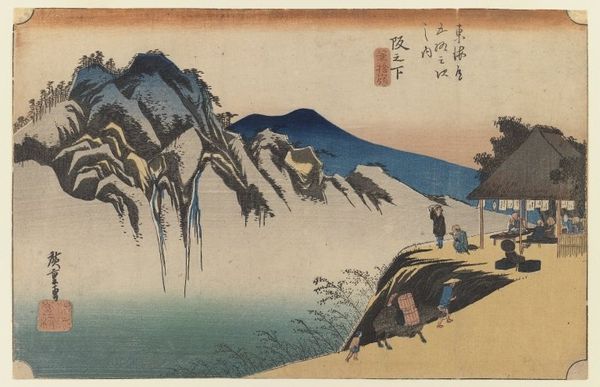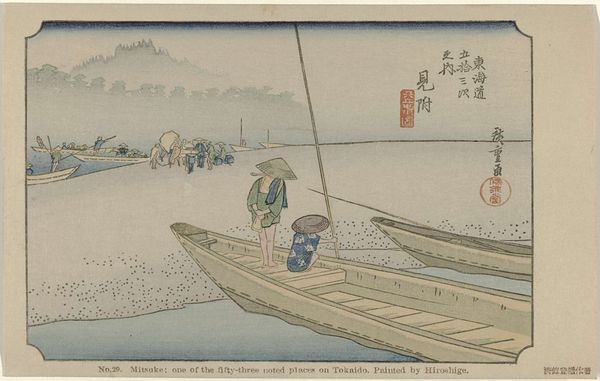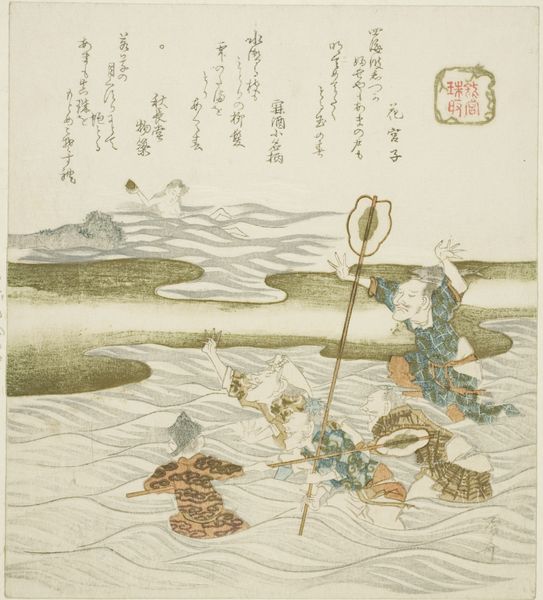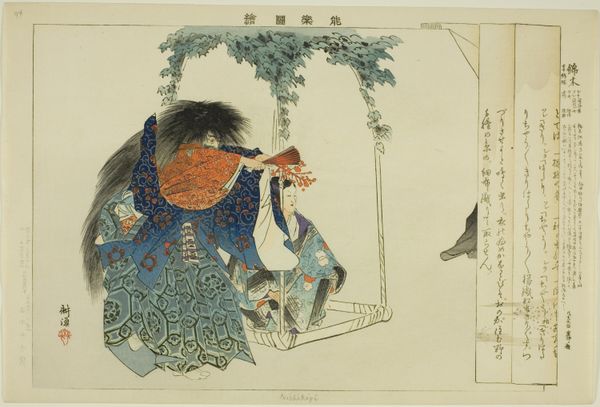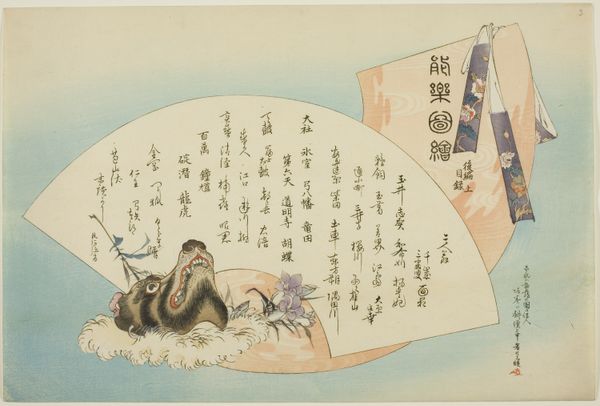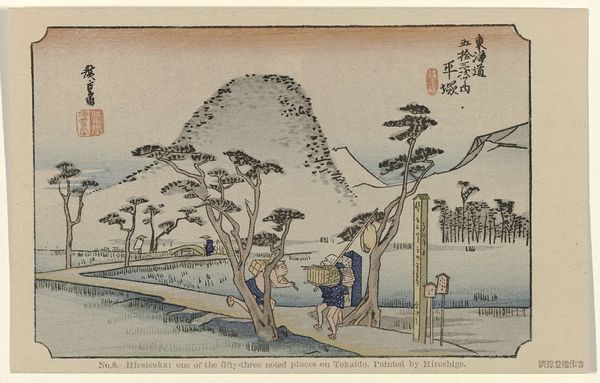
Dimensions: height 90 mm, width 141 mm
Copyright: Rijks Museum: Open Domain
This woodblock print, Yokaichi, was made by Utagawa Hiroshige in 19th century Japan. It’s part of a series depicting the fifty-three stations of the Tōkaidō, the main road connecting Edo, modern Tokyo, with Kyoto, the imperial capital. Hiroshige’s work invites us to consider the public role of art in 19th-century Japan, and to examine the social conditions that shaped artistic production at the time. Woodblock prints were an established art form, tied to a culture of craftsmanship, and produced for a broad public. Hiroshige's scenes of everyday life and landscapes catered to a growing interest in travel and leisure among the merchant classes. The Tōkaidō series, in particular, captures the spirit of a changing Japan, opening up to internal travel and trade. By studying popular art forms like this, and exploring archives of prints and other visual media, we gain insight into the social and cultural values of the past. Art, then, becomes a window into understanding the complexities of society.
Comments
No comments
Be the first to comment and join the conversation on the ultimate creative platform.
